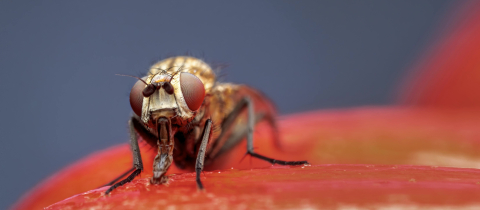Glycogen storage disease is a rare genetic condition characterized by deficiencies of particular enzymes. These enzymes are involved in converting glucose into glycogen, the form in which sugars are stored in the liver, or in converting glycogen back into glucose, which can then be used as a source of energy. One of the symptoms of glycogen storage disease, is, therefore, a lack of energy. In one particular type of glycogen storage disease, dihydroxyacetone (DHA), an essential enzyme required to release glucose from glycogen, is missing. This is why the person afflicted will have zero energy. A logical assumption would, therefore, be to supplement the diet with this compound, right? That's precisely what happened when upon experimenting, an interesting incidental finding was stumbled upon.
In the 1950s, at the University of Cincinnati Children's Hospital, researcher Eva Wittgenstein began to give large oral doses of DHA to children with glycogen storage disease hoping to overcome the body’s lack of production of this substance. Although DHA does not taste bad, it did not always go down smoothly. Often the children would spit up some of the stuff and the nurses would dutifully wipe it off their skin. Now as it is with children, it is not so easy to keep their faces clean, and not every spot was properly wiped off. That is when Wittgenstein noticed that a brown colour developed where the DHA had remained in contact with the skin. Intrigued by this observation, she made up some test solutions of the compound and tried different concentrations on her own skin. Lo and behold, these patches of her skin developed a darker tan-like tone.
It did not take long to figure out what was happening. In fact, the reaction involved had been extensively described some forty years earlier by Louis Maillard in France. Although he was not interested in tanning, his research involved the colour of beer, toast and cooked meats and why these turned brown when prepared. Maillard eventually determined that the brown colour was due to a reaction between proteins and sugars in the foods. This is the “Maillard reaction” which we now commonly refer to today.
But how does this happen with a fake tan? DHA is actually a simple sugar and our skin is composed of proteins. When these combine they form compounds called melanoidins, which as the name implies, are similar to melanin, the natural pigment in the skin. The discovery that DHA had this tanning effect launched a whole industry with creams, lotions, and spray varieties. And the practice is not even considered dangerous since DHA is a naturally-occurring compound in the body. If you read the labels of the commercially-available fake tan products out there, you will notice that mostly all of them contain a 2-5% solution of DHA. And it certainly is a lot safer than frying in the sun. Keep one thing in mind, though, fake tans do not protect you from burning when you go out in the sun. So be sure to apply sunscreen accordingly!







